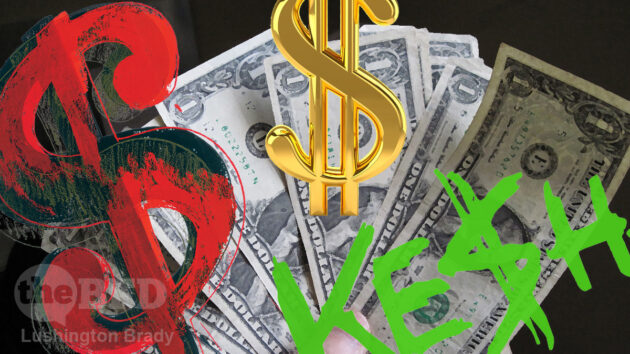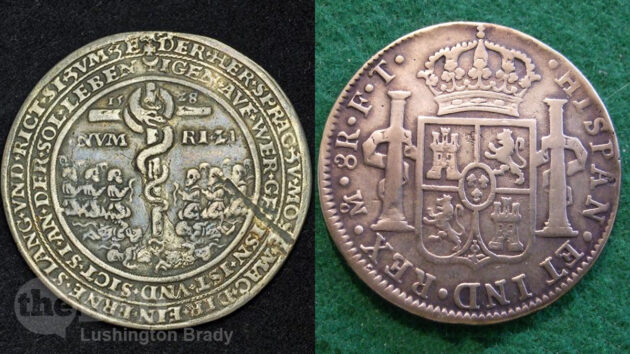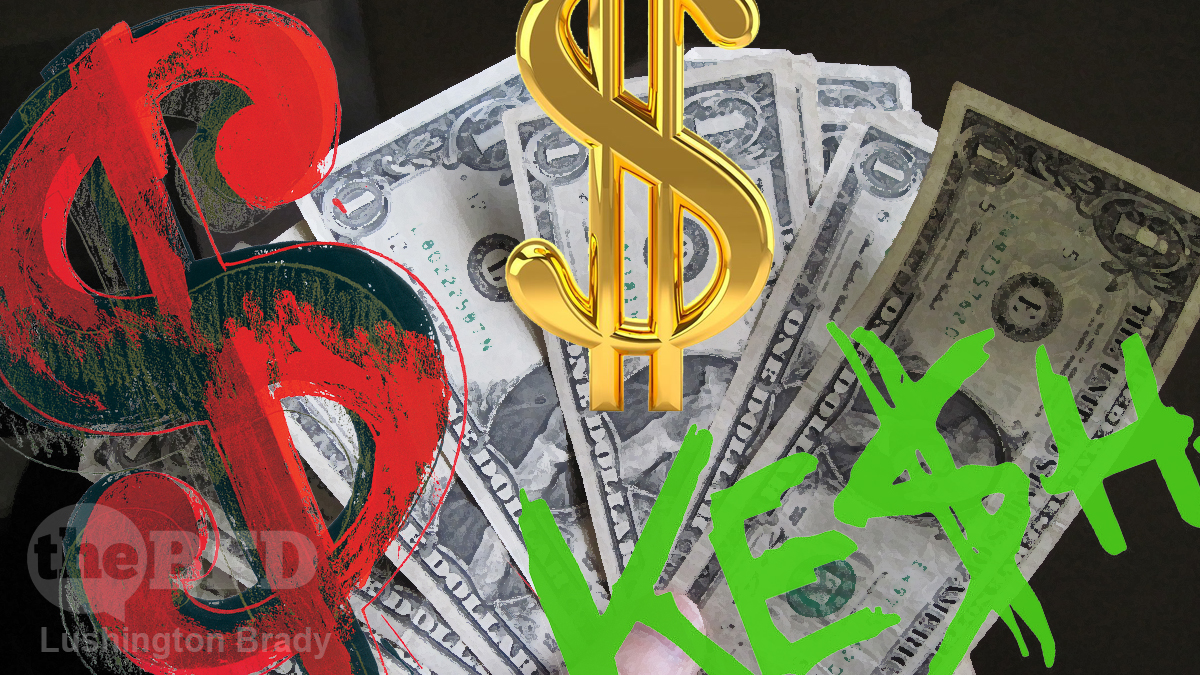It’s a symbol we see every day, in almost every context imaginable. It’s used in computer coding, emojis, artwork, even pop stars’ names. But most often we see it used to indicate currency.

I’m talking, of course, of the dollar: or at least, the “dollar sign”.
For such a ubiquitous symbol, though, nobody knows for sure how it originated.
The British pound sign is much older than the dollar, and has a clear provenance. It derives from the Latin “libra pondo”, or “pound by weight”. The Anglo-Saxons based their currency on a pound of silver. Hence, the pound symbol originated as an ornate L, with a crossbar to show that it was an abbreviation. It assumed its current £ shape by the 17th century.
The dollar sign is much younger and more mysterious.
The word “dollar” originated as “joachimsthaler”, referring to the fact that the 16th century Kingdom of Bohemia minted its coins with silver from the valley named Joachimsthal (which, incidentally, also later lent its name to the Neanderthals). The mercantilist Dutch altered that to “daler” and, by the time the word made its way across the Atlantic to Yankee America, it was spoken and written as “dollar”.
So, where did the symbol come from? In its American form, it is an S with two vertical strokes ||. Some argue that the downstrokes are a U minus its bend. Thus, the dollar sign began as “US”. Some think it’s an abbreviation for “Units of Silver”. Ayn Rand thought it stood for “United States”.
But the symbol was in use before 1776, at which time the United States was called the United Colonies of America.
Another theory links it back to the Bohemian thaler, one issue of which featured a serpent on a cross (a reference to Moses winding a bronze snake around a pole).
Another theory links it to the 18th and 19th century Spanish dollar, the famous “piece of eight”. That coin featured the Pillars of Hercules at the Strait of Gibraltar, with an s-shaped banner twined around each.

But the most widely accepted theory is another involving Spanish coinage.
Owing to the inter-trade between the Spanish and British American colonies, the peso was legal tender in the US until 1857. It was often written as Ps. Thanks to lexicographal drift, that eventually became an S with a simple vertical stroke. Given that a Spanish and American dollar were roughly equivalent, the symbol transferred to the currency of the soon-to-be United States of America.
However it originated, the first known printed dollar sign rolled off a Philadelphia press in the 1790s, courtesy of a Sassenach-hating Scotsman named Archibald Binny.
As for the American dollar bill, that’s a whole ‘nuther rabbit-hole of eyes-in-pyramids and mysterious Latin mottoes…
Please share this article so that others can discover The BFD

